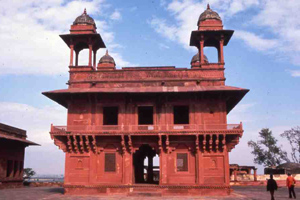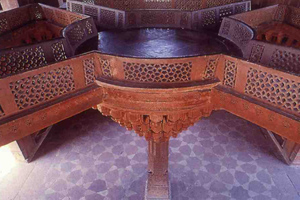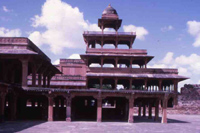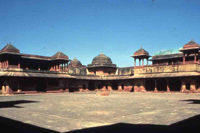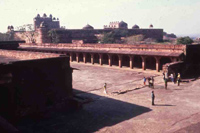AGA KHAN PROGRAM FOR ISLAMIC ARCHITECTURE
Course 4.611/4.613:
13- Fatehpur Sikri, India: (Click on images to enlarge)
The Mughals of India:
Ruled most of India for three centuries before the establishment of direct British rule in 1858. The period between the founder Babur's reign (1526-30) and 1707 is considered the age of the Great Mughals.
Jalal al-Din Akbar (1556-1605):
The third and probably greatest Mughal emperor. He built Fatehpur Sikri, moved the court there between 1571 and 1585, and created an environment for dialogue between the various religious sects in the empire. He amalgamated all doctrines in a new vision of a universal order, the Din-i Ilahi, in which he was the infallible imam.
Miniature painting showing Akbar supervising the building of Fatehpur Sikri from the Akbarnama ca 1590 |
Akbar presiding over discussions in the Ibadatkhana, ca 1604 |
Fatehpur Sikri:
Established near the old settlement of Sikri and the khanqah of the sufi sheikh Salim al-Din Chishti (d. 1572). It was planned to become the dynastic ceremonial center with an elaborate palatial complex and numerous pavilions for the courtiers. The royal section of the city stretched for 2 miles along a rocky ridge overlooking an artificial lake to the north. The residential areas extended on the low land south of the palaces and were surrounded by fortifications.
Schematic plan of Fatehpur Sikri showing its main components,16th century (1st image) |
|
Fatehpur Sikri plan of the royal complex |
Important Structures in the City:
- The Hiran Minar: A pivotal structure, this tower may have served as the zero milestone in the demarcation of the empire's road system.
Hiran Minar; (Deer Minaret) 1571-2 |
The Hiran Minar as the apex of a triangle containing the royal complex. |
- The Hatyapul Gate (Elephant Gate): may have been the ceremonial entry into the royal enclosure from the lower level of the north plains.
- The Congregational Mosque (Jami‘ Masjid): a huge sandstone enclosure with two main gates: the Badshahi (Royal) Gate in the east and
- The Bauland Darwaza (Lofty Gate): The major gate facing southtowards the residential sections. It is a huge, three-sided Iwan gate topped with chattris.
The Bauland Darwaza (Lofty Gate) |
- Tomb of Sheikh Salim al-Din Chishti: The spiritual center of the city, it is a richly decorated square pavilion built of white marble.
Tomb of Salim al-Din Chishti |
- The Divankhana-i ‘Amm (Public Hall): a courtyard structure with a royal pavilion.
Divan-i 'Amm audience hall |
- The Divan-i Khass (Private Hall): a square building with four Chattris, its plan is radially arranged around a central column supporting the throne area.
Divan-i Khass |
The throne area inside the Divan-i Khass |
- The Panch Mahal: A five-story, porticoed pavilion (baradari) that served as a viewing stand for the ladies of the Harem from behind the jalis (carved screens).
The Panch Mahal |
- Anup Talau: A square reservoir in the sultan's private section with cross-axial bridges leading to a central platform.
Anup Talau |
- Jodh Bai's Palace: A palace in the zenana (harem).
Jodh Bai's Palace |
- The Harem, also known as the Stables: A rectangular enclosure around a courtyard.
View of stables |
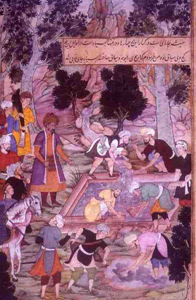
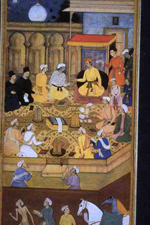 A
A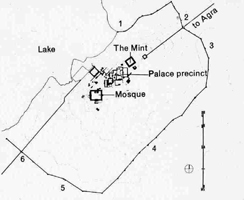

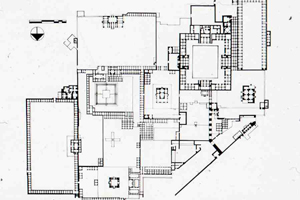
 1571-2, ext vie-13.jpg)
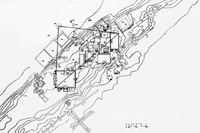
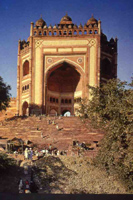
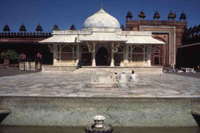
court, ext-13.jpg)
